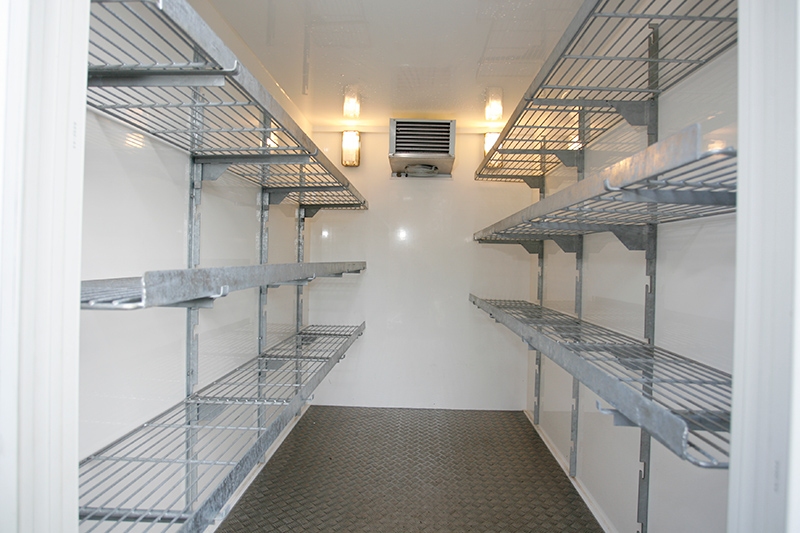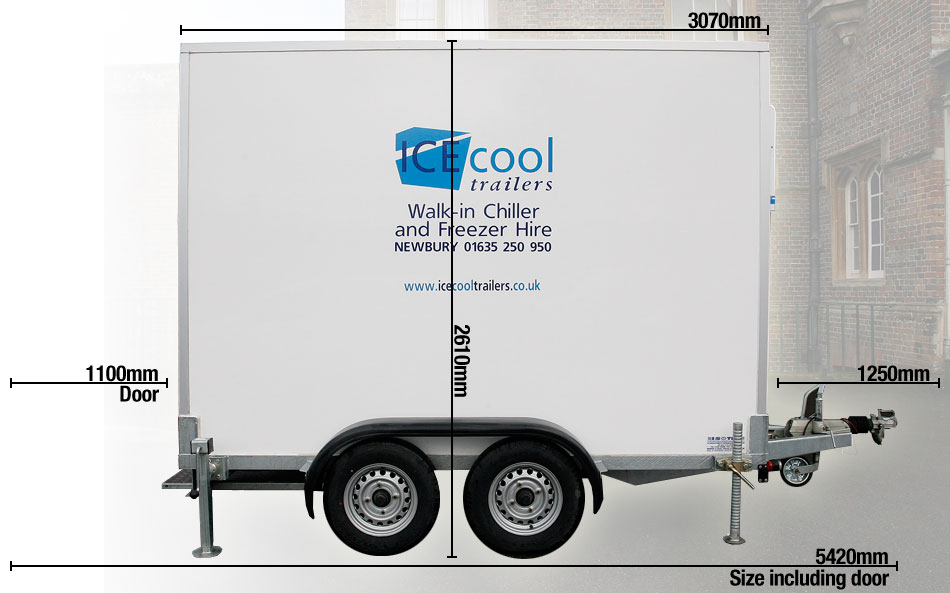How Does A Cold Room Work?

Cold rooms play an essential role in various UK industries, from food preservation and pharmaceutical storage to chemical processing and live events - but how exactly do they work?
At Ice Cool Trailers, we deliver walk-in cold rooms and refrigerated trailers for temporary cold storage needs, so we thought you might also enjoy understanding how these units actually work - after all, the science of how cold rooms keep things cold is quite fascinating.
In the following blog, we’re going to give you an overview of both the cooling cycle and the insulation used in our trailers and cold rooms. Note that what you read applies to both refrigeration and freezing - remember, freezer trailers and walk-in rooms work the same as chillers, just at colder temperatures. So, whether you’re looking to rent a cold room in the UK or simply curious about how cold rooms work, let’s take a closer look.
What is a Cold Room?
So, what is a cold room? Put simply, a cold room is essentially a large refrigerated space designed to store perishable goods at low temperatures, ensuring their longevity and safety. These environments are engineered to maintain precise temperature conditions, which are crucial for a variety of industries including food and beverage, floral, pharmaceutical, and more.
The basic principle behind a cold room is to create a sealed environment that can be consistently cooled to specific temperatures, which is typically achieved through the use of a refrigeration cycle that involves the compression, condensation, expansion, and evaporation of a refrigerant. Let’s take a closer look at how this process works.
Components of Cold Room Systems
A cold room operates through a coordinated system involving several critical components: the compressor, condenser, evaporator, and expansion valve, and each plays a pivotal role in the refrigeration cycle. The compressor is the heart of the system, pumping refrigerant through the system; put simply, it compresses the refrigerant, which heats it up as it flows into the condenser.
Here, the refrigerant dissipates heat to the outside air, cools down, and condenses into a liquid. The expansion valve then throttles the cooled refrigerant, reducing its pressure and temperature before it enters the evaporator. In the evaporator, the refrigerant absorbs heat from the cold room’s interior, cooling the air and products stored within. The refrigerant then returns to the compressor to repeat the cycle.
Principles of Refrigeration
Overview of Refrigeration Systems
Refrigeration systems in cold rooms are based on the principle of removing heat from a closed environment; this process is crucial for maintaining the low temperatures needed to preserve perishables or sensitive materials. The system's design ensures that the refrigeration cycle runs continuously, efficiently removing heat from the interior space.
Evaporation and Condensation Processes
The evaporation and condensation processes are central to the functioning of refrigeration systems. During evaporation, the refrigerant absorbs heat from the inside of the cold room as it turns from a liquid into a gas in the evaporator coils. This phase change pulls heat from the air within the cold room, effectively lowering the temperature. The gaseous refrigerant is then cycled back to the condenser, where it releases the absorbed heat to the outside environment and condenses back into a liquid.
Role of Refrigerants in Cooling
Refrigerants are substances used in a refrigeration cycle to facilitate heat transfer. Common refrigerants include hydrochlorofluorocarbons (HCFCs) and hydrofluorocarbons (HFCs), though modern environmental standards are guiding the transition to more eco-friendly substances like ammonia or carbon dioxide. The choice of refrigerant affects the efficiency, operating costs, and environmental impact of cold room operations.
Heat Transfer Mechanisms in Cold Rooms

Conduction: Transfer of Heat Through Solids
Heat transfer by conduction occurs when heat moves through materials like the walls of the cold room. Insulating materials are crucial in minimising this heat transfer. Good insulation ensures that the external higher temperatures do not penetrate the interior, keeping the cold room efficient.
Convection: Transfer of Heat Through Fluids
Convection involves the movement of heat through the circulating air inside the cold room. Ensuring proper air circulation is vital for maintaining uniform temperature throughout the space, avoiding hotspots that can lead to spoilage.
Radiation: Transfer of Heat Through Electromagnetic Waves
Although less significant in cold rooms, radiation can transfer heat through electromagnetic waves from warmer objects to cooler ones. Radiant barriers and reflective insulations can help reduce heat ingress by radiation, complementing the overall insulation strategy.
Insulation and Temperature Control
Importance of Insulation in Cold Rooms
Effective insulation is also the cornerstone of efficient cold room operation; this helps maintain the desired temperatures with minimal energy expenditure by reducing the heat exchange between the cold room's interior and the external environment.
Types of Insulation Materials Used
Additionally, it’s worth noting that various materials are used for insulating cold rooms, including polyurethane foam, polystyrene, and phenolic foam; these materials are chosen for their thermal resistance properties and compatibility with the room's operating temperatures and humidity conditions.
Temperature Regulation Mechanisms
Cold rooms are also equipped with advanced control systems to maintain consistent temperatures; these include thermostats, which monitor and adjust the internal temperature, as well as automated systems that can modulate the refrigeration cycle based on real-time data, ensuring optimal conditions are maintained continuously.
The Bottom Line
And there you have it - now you know how a cold room keeps things cold! So whether you’re a small business, caterer, or simply hosting a live event, if you’re looking for a cold room or a fridge trailer for either long or short-term storage, feel free to contact us. At Ice Cool Trailers, we’ve been serving most of southern England and South Wales for more than 20 years - and we're sure to have a custom plan to suit both your logistical needs as well as your budget.



